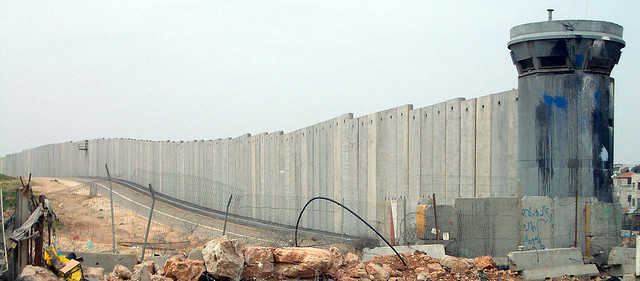Please support our coverage of democratic movements and become a monthly supporter of rabble.ca.
Colonialism is a word increasingly used today by Aboriginal activists, artists and academics in Canada. And the concept — meaning domination over people by a militarily and economically stronger power, with all its attendant horrors for the controlled population — is not used just to describe the past. From an aboriginal perspective, colonialism correctly describes the present situation too.
Less frequently, however, do we see colonialism applied to the condition of the Palestinians living under Israeli domination or the indigenous people of South Africa in the centuries marked by white settlement and rule there.
But in fact both the founding of a Jewish state in the Middle East and the creation and maintenance of a white racist state in South Africa were examples of colonialism. In the case of Israel, it’s ongoing occupation of and further expansion into Palestinian lands indicates that colonialism is still being practiced.
Nothing better illustrates the connection between Israeli and South African colonialism than the appeal by Theodor Herzl, the originator of the plan to create a Jewish state, to Cecil Rhodes, a 19th century driving force in the expansion of British imperialism throughout southern Africa. Seeking powerful support, Herzl appealed to Rhodes to “put the stamp of your authority on the Zionist plan” to create a Jewish state in Palestine. And why would Rhodes endorse Herzl’s agenda? Because, like Rhodes’ program in southern Africa, the Zionist goal was, wrote Herzl, “colonial.”
This knitting together of the history, the condition and the resistance struggles of three apparently disparate people is the brilliant premise of a new photo exhibition organized by Canadians for Justice and Peace in the Middle East, a premise dramatically carried out in a moving photographic display that opened on May 15 in Victoria.
“Dispossessed but Defiant: Indigenous Struggles from Around the World” is a series of professionally produced panels depicting the history of indigenous people in Canada, South Africa and Palestine, featuring powerful photos and succinct descriptive text that weave together the stories of the three peoples.
The photos are themselves moving testaments to both the extent of repression exercised by the forces that colonized those three regions and the determined resistance to the invasion and occupation of their lands by each of the indigenous groups. Assembled from a wide range of historical sources and interpreted with the help of experts on the three areas, the exhibit puts forward a compelling story. Each section contains images that evoke the painful experience of the dominated people and their determined opposition to it.
Several images are particularly stunning.
In the section devoted to Canada, a photo of aboriginal families camped outside of a residential school in Manitoba depicts the dilemma of people who, having forcibly delivered their children into the clutches of a brutal assimilative system, are grouped in silent witness, perhaps hoping for a brief summertime reunion with their kin.
Among the photos from South Africa, an astonishing, secretly snapped image of members of a police assassination squad taking a smoke break in the course of their hunt for dissidents. They stand casually over a dead black person, like 19th century safari hunters surveying their morning’s kill.
From the panels addressing the history and contemporary condition of the Palestinians, an image of a Palestinian boy, no more than ten or 12, surrounded by heavily armed and armoured Israeli soldiers. Vulnerable as he is, there is no sign of him backing down. This is his land, and he is unyielding in his readiness to maintain it.
Even for people familiar with the struggles depicted, the exhibit offers some eye-catching, never-before-seen images that reinforce both the similarity of the experience of these indigenous peoples and their determined but peaceful struggles to assert their rights, to uphold their culture and to reclaim ownership of the lands that they never voluntarily relinquished.
Predictably in Victoria, a phone call and email surge was initiated within hours of the exhibit being mounted, aimed at pressuring politicians and officials who administered the public gallery to dismantle the show. The complainants all had a similar message — that connecting the dispossession of the Palestinians at the hands of Zionism with the dispossession of native people in Canada was inaccurate, and that the exhibit would provoke violence.
But the pressure on politicians and officials failed. The launch reception on May 15 successfully brought together indigenous people and refugees from South Africa, Palestine and Canada’s First Nations in a unified and dignified recounting of their experiences. The show remained in place for two weeks, drawing hundreds of viewers who commented thoughtfully and appreciatively about how much they had learned from and been inspired by the exhibit.
Launched in Victoria, the CJPME exhibit will be shown in other Canadian cities in the near future.
Larry Hannant (PhD) is a history instructor at Camosun College, Victoria, B.C., and an award-winning author.
Photo: flickr/Adam Nieman




